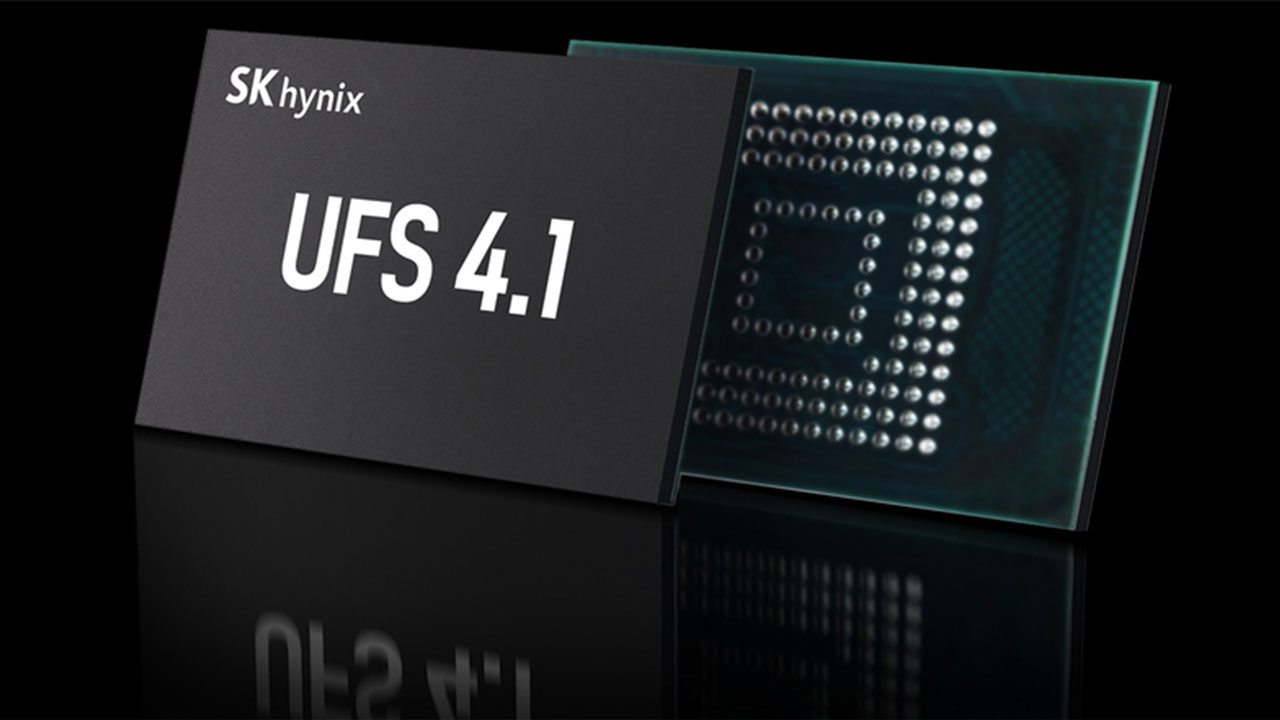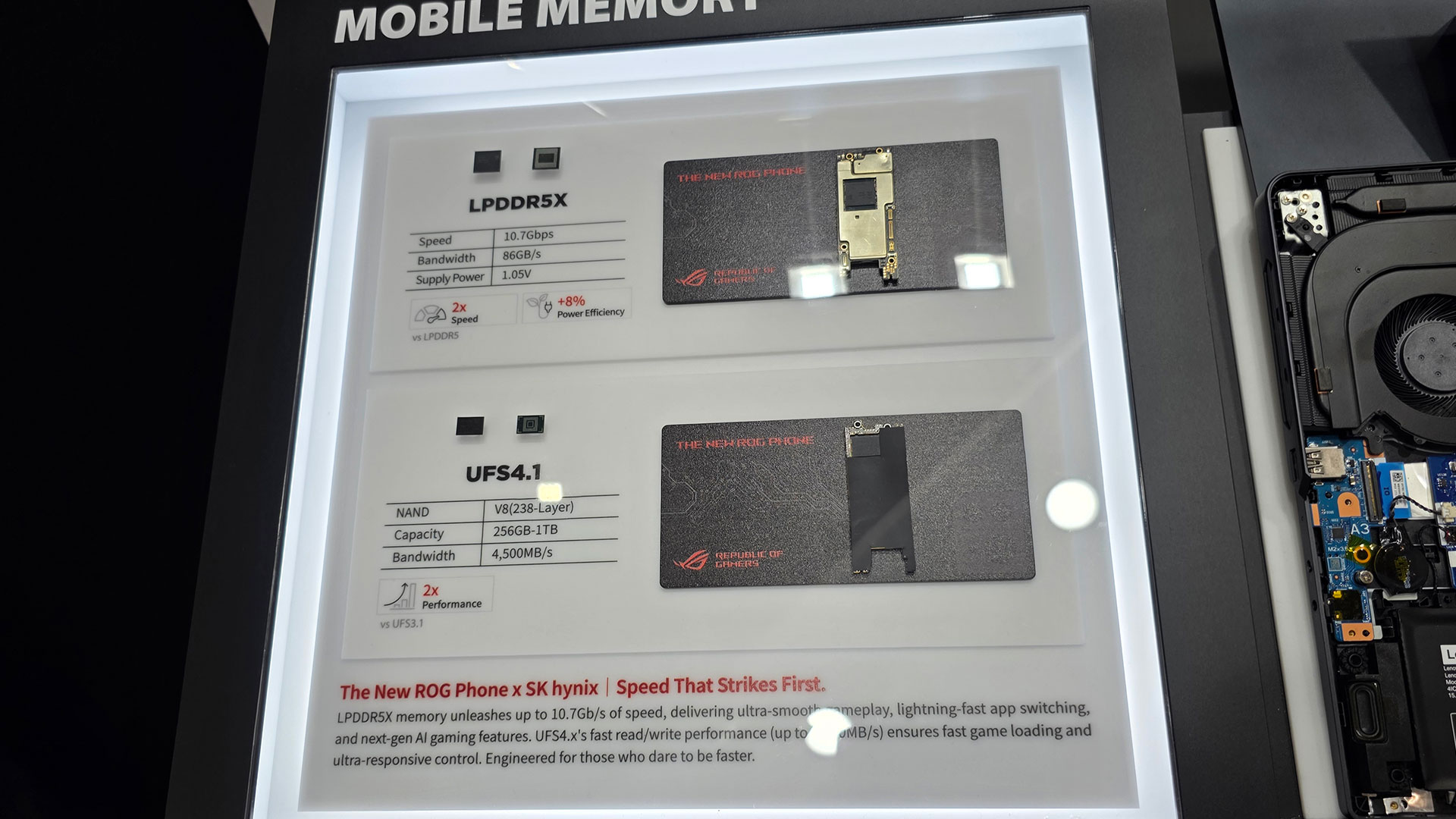SK hynix announces 321-layer, UFS 4.1 chips — TLC 4D NAND set to land in PCs and data centers
SK hynix's touts new levels of performance with reduced power consumption, and is debuting first in smartphones.

Leading memory maker SK hynix today announced it has developed a UFS 4.1 storage solution built upon its 321-layer 4D NAND flash. The super dense NAND chips which will power these UFS 4.1 ICs are expected to facilitate both 512GB and 1TB capacities, and arrive in Q1 2026 in smartphones. Moreover, the new NAND chips are said to be 15% thinner than the previous generation, yet deliver “best-in-class consecutive reading performance” at low power. SK hynix said the same 321-layer 4D NAND flash chips will also be utilized in PC SSDs within the year.
Let’s drill down on some of the benefits that SK hynix claims for the new UFS 4.1 ICs. In terms of performance, users can expect data transfer speeds as high as 4,300 MB/s, says the South Korean memory maker. From a PC enthusiast perspective, that’s better than you could expect from the best PCIe NVMe Gen 3 SSDs. However, it isn't any faster than SK hynix's own current gen UFS 4.1 solution, based upon 238-layer 4D NAND flash.
UFS (Universal Flash Storage) is a targeted storage solution for smartphones, but is also widely adopted in tablets, digital imaging, automotive, wearables, and VR devices. It is a significantly more advanced standard, with far higher bandwidth and performance than eMMC, for example, so it is favored in flagship and premium designs.
There's better news, though, as SK hynix claims the upcoming UFS 4.1 ICs maintain “the fastest sequential read for a fourth-generation of UFS, while providing the best-in-class performance by also improving random read and write speed.” Random reads and writes speeds are boosted by 15% and 40%, respectively, and can be critical to smooth multitasking.
Turning to SK hynix’s efficiency claims, and we just have one headline figure. It says that there is a 7% improvement in power efficiency moving from the previous gen UFS 4.1 chips, found in devices such as the latest Asus ROG Phone (see our slide from Computex, below).
The transition to 321-layer 4D NAND flash will also mean SK hynix UFS 4.1 NAND is thinner, which mobile device makers always welcome. Specifically, the memory maker says that the new ICs will be 0.85mm thick, down from 1.00mm for the UFS 4.1 NAND packing 238-layer 4D NAND flash.
SK hynix began mass production of the world's first 321-layer NAND flash back in November 2024. It has taken until now to develop UFS 4.1 using these ICs, and it looks like it will be well into 2026 before we get PC SSDs using the technology. Meanwhile, rivals like Samsung are snapping at its heels with talk of 400-layer NAND. Other players like Micron, Kioxia, and YMTC are thought to be further behind.
Feature | UFS 4.1 with 321-layer 4D NAND | UFS 4.1 with 238-layer 4D NAND |
|---|---|---|
NAND layers | 321 | 238 |
IC thickness | 0.85mm | 1.00mm |
Max sequential read speed | 4.3 GB/s | 4.3 GB/s |
Random read / write improvement | 15% / 40% | -- |
Efficiency improvement | 7% | -- |
AI optimization | More | Less |
Max IC capacity | up to 1TB | up to 1TB |
Availability | Q1 2026 | Now |
A slice of 2025 tech news wouldn’t be complete without mention of AI, and SK hynix doesn’t disappoint here, with eight hats tipped to this hotly trending tech segment. In fact, SK hynix leads its pitch for its latest UFS 4.1 solution as being “optimized for on-device AI,” and enhancing its lead as a “full stack AI memory provider.” Apparently, this new NAND will “ensure a stable operation of on-device AI” and give products that use it an “AI technological edge.”
PC SSDs featuring SK hynix 321-layer 4D NAND
SK hynix’s new 321-layer 4D NAND flash isn’t going to be rolled out exclusively to mobile device makers. The firm’s President and Chief Development Officer, Ahn Hyun, is quoted as saying 321-high 4D NAND-based SSD for both consumers and data centers will be developed within the year: "We are on track to expand our position as a full-stack AI memory provider in the NAND space by building a product portfolio with AI technological edge". We’d expect these SSDs to appear under the firm’s own brand, as well as feature in products from companies such as Adata, Kingston, and Solidigm.
Follow Tom's Hardware on Google News to get our up-to-date news, analysis, and reviews in your feeds. Make sure to click the Follow button.

Mark Tyson is a news editor at Tom's Hardware. He enjoys covering the full breadth of PC tech; from business and semiconductor design to products approaching the edge of reason.
- Paul AlcornEditor-in-Chief
-
thestryker I'd love to see them utilize this in a more dense cell form to give a more 3D XPoint like experience. No matter it'll be interesting to see what real world impact the random performance has.Reply

